In South China, they would say they'd eat everything that has four legs except the dinner table and everything that has two wings except a plane. Many of the dishes served in China may really surprise foreigners.
Snake soup is among the most treasured soups in China. Then, there is snake gall and blood mixed in liquor that supposedly will brighten your eyes. Some "westernized" Chinese would suggest that if Adam and Eve had been Chinese, we humans would still be in the Garden of Eden because they would have eaten the snake.
Chopsticks are the main table utensils in China. Chinese children start with a spoon but will adapt to chopsticks as early as when they turn one. As a gift, chopsticks symbolize straightforwardness because of their shape. Chinese chopsticks don't have pointed tips, unlike the Japanese style that is refined to pick out the bones of their main diet, fish. Most Chinese chopsticks are made of bamboo, though today, you see more and more wooden and plastic ones.
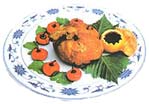
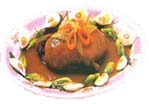
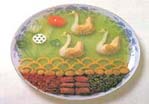
Foreigners are not expected to use chopsticks proficiently, but if they do, they will give a mighty impression. Therefore, before you go to China, go to a local Chinese restaurant, if not to find authentic Chinese food, at least you can practice using chopsticks. Its all right if, in your first meal in China, you can't use chopsticks. If you still can't handle the two sticks to pick up a big shrimp in your tenth meal, you show your incompetence in learning and the willingness to learn.
Cooking has occupied a lofty position in Chinese culture throughout history. The great Chinese philosopher Lao Zi once said of the art, "Governing a great nation is much like cooking a small fish."
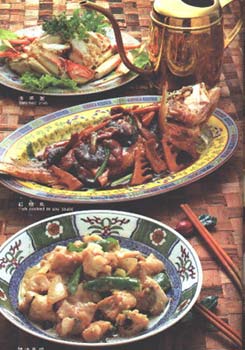 Chinese food can be roughly divided into Northern and Southern styles of cooking. In general, Northern dishes are relatively oily and the use of vinegar and garlic tends to be quite popular. Wheat, processed into pasta, also plays an important role in Northern cooking; noodles, ravioli like dumplings, steamed, stuffed buns, fried meat dumplings, and steamed bread are just a few of the many flour based treats enjoyed in the North of China. The best known regional variations of Northern Chinese cuisine include those of Beijing, Tianjin, and Shandong.
Chinese food can be roughly divided into Northern and Southern styles of cooking. In general, Northern dishes are relatively oily and the use of vinegar and garlic tends to be quite popular. Wheat, processed into pasta, also plays an important role in Northern cooking; noodles, ravioli like dumplings, steamed, stuffed buns, fried meat dumplings, and steamed bread are just a few of the many flour based treats enjoyed in the North of China. The best known regional variations of Northern Chinese cuisine include those of Beijing, Tianjin, and Shandong.
Representative of Southern cooking styles are Szechwan and Hunan cuisine, famous for their liberal use of chili peppers.
Within the whole of Southern cooking, the Jiangsu and Zhejiang regions emphasize freshness and tenderness, while Guangdong cuisine tends to be somewhat sweet and always full of variety. Rice and its byproducts, including noodles, cakes, and congee form the typical foundation for Southern dishes.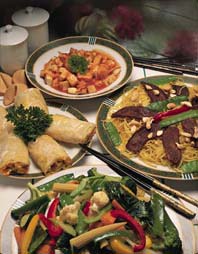
In Chinese cooking, color, aroma and flavor share equal importance in the preparation of every dish. Normally, any one entree will combine three to five colors, selected from ingredients that are light green, dark green, red, yellow, white, black, or caramel colored. Usually, a meat and vegetable dish is prepared from one main ingredient and two to three secondary ingredients of contrasting colors. They are then cooked appropriately, incorporating the proper seasonings and sauce to create an aesthetically attractive dish.
A dish with a fragrant aroma will most certainly whet the appetite. Ingredients that contribute to a mouthwatering aroma are scallions, fresh ginger root, garlic, and chili peppers. Other include wine, star anise, stick cinnamon, pepper, sesame oil, and dried Chinese black mushrooms. Of utmost importance in cooking any dish is preserving the fresh, natural flavor of its ingredients, and removing any undesirable fishy or gamey odors. In Western cooking, lemon is often used to remove fishy flavors; in Chinese cooking, scallions and ginger serve a similar function. Soy sauce, sugar, vinegar, and other seasonings add richness to a dish without covering up the natural flavor of the ingredients. A well prepared Chinese dish should taste rich to those who like strong flavors, but not over spiced to those who seek a milder taste. It should seem sweet to anyone who has a sweet tooth, and hot to those who like a piquant flavor. A dish that is all of these things to all of these people is a truly successful dish.
Color, aroma, and flavor are not the only principles to be followed in Chinese cooking; nutrition is also an important concern.
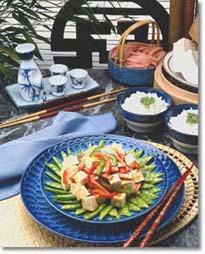
The principle of the harmonization of foods can be traced back to the Shang dynasty scholar Yi Yin. He relates the five flavors of sweet, sour bitter, piquant, and salty to the nutritional needs of the five major organ systems of the body (the heart, liver, spleen/pancreas, lungs, and kidneys), and stresses their role in maintaining good physical health.
In fact, many of the plants used in Chinese cooking, such as scallions, fresh ginger root, garlic, dried lily buds, tree fungus, etc. have properties of preventing and alleviating various illnesses.
The Chinese have a traditional belief in the medicinal value of food and that food and medicine share the same origin. This view could be considered a forerunner of nutritional science in China. Notable in this theory is the concept that correct proportion of meat to vegetable ingredients should be maintained; one third of meat based dishes should be vegetable ingredients and one third of vegetable dishes should be meat. In preparing soups, the quantity of water used should total seven-tenths the volume of the serving bowl. In short, the correct ingredient proportions must be adhered to in the preparation of each dish or soup in order to ensure full nutritional value.
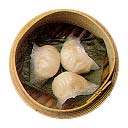
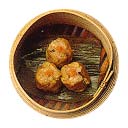
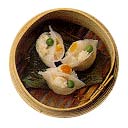
The Chinese have a number of rules and customs associated with eating. For example, meals must be taken while seated; there is a set order of who may be seated first among men, women, old and young; and the main courses must be eaten with chopsticks, and soup with a spoon. Chinese banquets are arranged on a per table basis with each table usually seating ten to twelve persons.
A typical banquet consists of four appetizer dishes, such as cold cut platters or hot hors d'oeuvres; six to eight main courses; then one savory snack type dish and a dessert. The methods of preparation include stir frying, stewing, steaming, deep frying, flash frying, pan frying, and so forth. A dish may be savory, sweet, tart or piquant. The main colors of a dish may include red, yellow, green, white and caramel color. Food garnishes, such as cut or sculptured tomatoes, Chinese white radishes, cucumbers, and so forth, may be used to add to the visual appeal of a dish. All of these elements contribute to making Chinese food a true feast for the eyes and nose as well as the taste buds.
With over 5000 years' history, Chinese have developed a high level of food preparing skill. In fact, Chinese culture considers cooking an art while all other philosophies consider the preparation of food a craft. Chinese food culture reflects two dominant Chinese philosophies: Confucianism and Taoism and has been developed and refined over many centuries since the great classical age of China, the Zhou Dynasty 1122-249 B.C. Ancient Chinese people have explored the world of plants, roots, herbs, fungus and seeds to find life giving elements as well as medicinal value. Therefore, unlike the majority of eastern cuisine, most Chinese dishes are low calorie and low fat. You may find answers to today's diet and health problems within Chinese food.
Dim Sum
Steamed Pork DumplingsIngredients (1 servings)
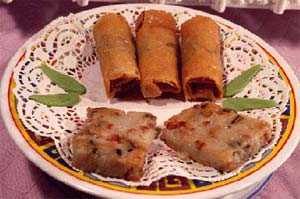
1 pk Round dumpling skins *
1/2 lb Prawns
12 Chinese mushrooms, small or use canned but squeeze dry
1/2 lb Ground pork
2 Green onion, finely chopped
1 sm Egg
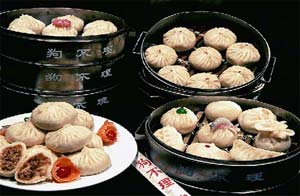
SEASONING:
1/2 ts Salt
1 ts Sugar
1 tb Sesame oi
2 ts Thin soy sauce
1 ts Oyster sauce
1 tb CornstarchInstructions
Shell, devein, wash, and drain prawns. Dice into bits.
Boil mushrooms in water for 10 minutes, rinse, squeeze dry, cut off and discard stems; then chop into very small pieces.
Combine the pork, mushrooms, prawns, and onion. Put mixture on chopping board and chop 10 to 15 strokes with cleaver. (Use a sharp knife if you don't have a cleaver.) Texture, when you're finished, should be slightly finer than hamburger.
Add "seasoning" and the egg to the pork mixture. Mix well.
To make dumpling, place 1 Tb filling in the center of a dumpling skin. Then bring all sides of the skin up to cover the meat as much as possible, without closing. The top of the dumpling is left open.
Cook dumplings by steaming for 30 minutes. Use as many as you need, with the rest, cool, wrap, freeze. Reheat after thawing by steaming 10 minutes.
Serve with soy sauce, hot sauce, or mustard.
* Dumpling skins are similar to won ton skins, except that they are round and slightly thinner. You may substitute won ton skins by merely cutting off the corners to round off the skin.
SOURCE: Chopstick, Cleaver and Wok.Spring Rolls (Fried Egg Roll) Ingredients (8 servings)
1/2 lb Lean pork, chopped
1 1/2 c Bean sprouts, chopped
1 1/2 c Cabbage, chopped
1/2 c Bamboo shoots, thinly sliced
1/2 c Grated carrot
3 Mushrooms, chopped
3 Green onions, thin slice
1 Garlic clove, minced
2 Slices ginger, minced
1 ts Soy sauce
1 ts Suar
1 tb Sesame oil
Dash pepper
8 Egg roll wrappersInstructions
Mix all ingredients together. Fill eggroll wrappers. Fold in sides, roll, seal with water or egg white. Deep fry in HOT oil until brown. Remove and drain. This will make 6 to 12 depending on how much filling you use.Barbecued Pork Buns Ingredients (16 servings)
1/3 c Warm water
1/2 ts Sugar
1 pk Dry yeast
2 1/2 c Flour
2 1/2 c Cake flour
4 tb Sugar
1/2 ts Salt
2 tb Shortening
1 1/4 c Low fat milk
16 Pieces white paper 2 inches square
FILLING:
6 oz Chinese BBQ pork, diced
1 tb Oil
2 ts Water
1/2 ts Salt
1/2 ts Sugar
1/2 ts Thin soy sauce
1 ts Oyster sauce
1 ts Hoisin sauce
2 ts Cornstarch
4 ts Cold water (For thickening)Instructions
Mix together the warm water, 1/2 tsp. sugar and yeast in an 8 oz. measuring cup. Let stand until it rises to the 8 oz. level (about 20 minutes).
Sift flour, cake flour, sugar and salt into a large mixing bowl.
Add shortening, yeast mixture and mil,.
Knead mixture 5 minutes to form a dough. Cover with a damp cloth and set dough in a warm place. Allow the dough to rise for 3 hours.
Heat wok, add oil and stir-fry pork for 2 minutes.
Add 2 tablespoons water, salt, sugar, soy sauce, oyster sauce and hoisin sauce. Bring it to a boil.
Prepare thickening by mixing the cornstarch and 4 tablespoons cold water. Stir into the mixture and cook for 1 minute. Let cool before using.
After 3 hours, when the dough has risen, shape into rolls about 2 inches in diameter. Cut each roll into 1-1/2 inch pieces.
Shape each piece into a shallow bowl shape.
Put 1 tablespoon filling in the center, close ans twist dough to form a bun. Put the bun on a 2 inch square of white paper. (This prevents the bun from becoming soggy while steaming.) Place 8 buns in a pie pan and allow them to set and rist for 15 minutes in a warm place.
Steam for 25 minutes.Custard Tarts Ingredients (About 2 dozens)
All Ingredients should be prepared before you start cooking this will save time and make cooking the dish easier and more enjoyable.
3 cups (750ml) all-purpose flour
1 teaspoon (5ml) salt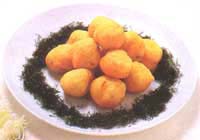
1 cup (250ml) vegetable shortening or lard
4 to 6 tablespoons (60 to 90ml) hot tap water
3 eggs
1/3 cup (80ml) sugar
1 1/2 cups (375ml) milkPreparation
Combine flour and 1/2 teaspoon (2ml) of salt in mixing bowl. Cut in shortening until mixture resembles bread crumbs. Mix in enough water to form a dough ball. Cut in half.
Roll out each half on lightly floured surface until 1/8 inch (0.5cm) thick. Cut 12 circles from each half 3 inches (8cm) in diameter.
Fit pastry circles into greased muffin cups, pressing sides so they reach rims.
Beat eggs. Stir in sugar and remaining 1/2 teaspoon (2ml) salt. Gradually blend in milk. Spoon about 2 tablespoons (30ml) egg mixture into each pastry.
Bake in preheated 350F (180C) oven until knife inserted in center of custards comes out clean. 25 to 30 minutes. Remove tarts from pan. Cool on wire racks.Sweet Almond Pudding Ingredients (4 servings)
1/3 c Sweet rice flour
2 tb + 2 t almond powder
1/2 c Cold water
3 c Cold milk
1/4 c Granulated sugar
1/4 c Sliced pitted red dates
3 tb Cold milk, if neededInstructions
In small bowl, mix rice flour & almond powder; add cold water a little at a time to make a thick, smooth paste. Thin further with 1/2 cup of milk. Pour into heavy saucepan, add remaining milk, and slowly heat to just under boiling, stirring constantly. Keep stirring to prevent lumping & burning. Turn off heat, cover & remove to cool place. You can prepare this first stage anytime ahead of dinner, keep covered & refrigerated. Pudding should be finished just before serving.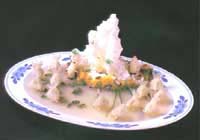
Just before serving, reheat pudding, stirring constantly. When hot, add sugar a little at a time. Keep stirring. Add sliced dates. Cook just under boiling point for 1 minute. Add extra milk if pudding becomes too thick: it should have consistency of melted ice cream. Pour into individual bowls & serve hot.
![]()
